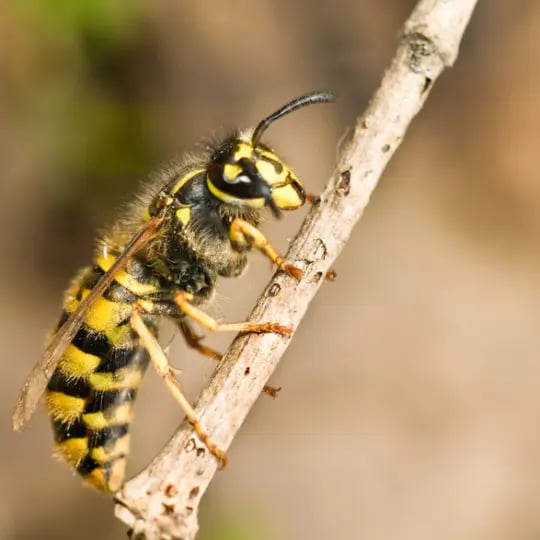Eliminate Yellow Jackets In & Around Your Home

Yellow jackets (genera Dolichovespula and Vespula) are a type of predatory wasp that can quickly put a damper on summer picnics, backyard barbecues, and outdoor playtime. They may be beneficial to gardens because they feed on insects that can be harmful to plants, but these stinging pests can prove problematic for people—they become aggressive when they feel threatened or their nests are disturbed. It’s a good idea to make your yard a no-fly zone if you plan to enjoy outdoor fun this summer.
Know Your Foe: How to Identify Yellow Jackets
Named for their yellow and black bodies, yellow jackets are often mistaken for bees or hornets, but there are ways to tell them apart.
Yellow jackets:
- Normally have alternating black and yellow body segments, but some may have black and white bodies.
- Fold wings lengthwise when at rest.
- Have thinner waists than bees. (Bees are usually fatter and hairy.)
- Range in size from approximately 1/2” to 3/4″.
- Tend to live underground in grayish, papery nests.
- Have smooth stingers. (Bees have barbed stingers.)
- Can sting more than once because their stingers don’t come out. (Bees can only sting once and then they die.)
Getting Rid of Yellow Jackets
Besides eating insects, yellow jackets also dine on foods that people eat, like meats, soft drinks, or sweets. To prevent yellow jackets from lingering close to your home you have to eliminate their food sources.
- Keep trash cans and recycling bins clean and sealed shut.
- If you have fruit trees in your yard, be sure to clean up fallen fruit regularly since that can attract pests.
- When grilling or dining al fresco, keep uneaten food covered.
Another way to eliminate yellow jackets is to destroy their nests. Look for nests during the day when it’s easier to see the insects flying in and out, but wait to destroy the nests until the evening. Yellow jackets return to the nest at night and you’ll be able to kill most of them. Also, they have poor eyesight and are less likely to sting you if they can’t find you.
Some people have had success with pouring boiling water on the nests, but it’s a dangerous method since the insects that don’t die can come after you. There are also numerous sprays, like pyrethrin aerosol, which you can purchase to poison the pests. Be sure to follow the directions carefully. There are baits and traps available, but set them up away from porches or play areas where you or your family spend time.
Yellow jackets live in colonies that may be populated with thousands of insects, so taking on the task of removing them may be bigger than you think. If you have an infestation, call Green Pest Solutions at 855-312-7157 right away.